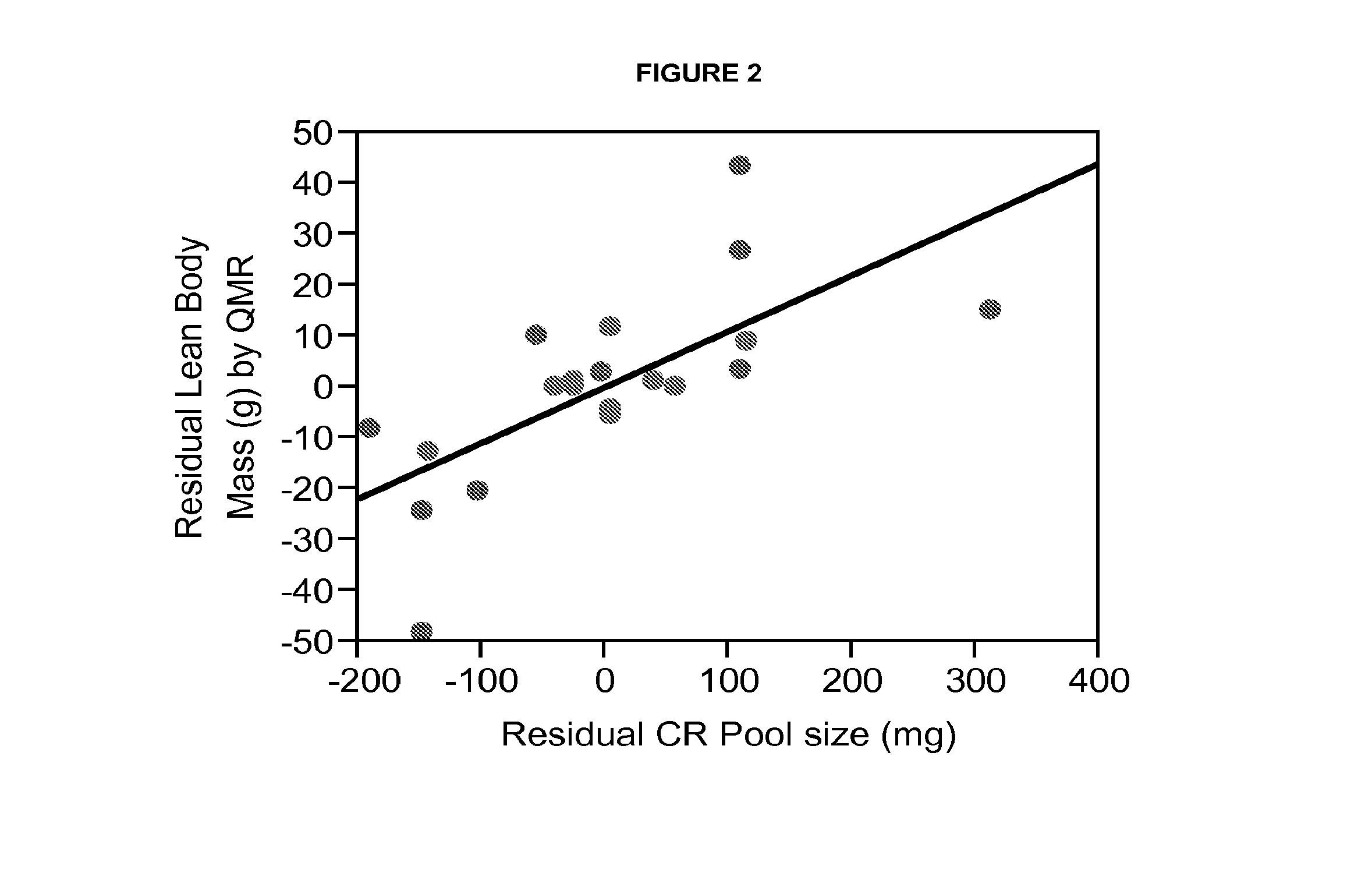Methods for determining total body skeletal muscle mass
a skeletal muscle and total body technology, applied in the field of skeletal muscle mass determination methods, can solve the problems of loss of skeletal muscle, increased risk of diabetes, increased body fat, etc., and achieve the effect of facilitating the wide-spread adaptation
- Summary
- Abstract
- Description
- Claims
- Application Information
AI Technical Summary
Benefits of technology
Problems solved by technology
Method used
Image
Examples
example
[0078]Chemical and Reagents: Acetonitrile and Water (all HPLC grade or better) purchased from Sigma Aldrich (St. Louis, Mo.). Ammonium Formate purchased from Sigma Aldrich (St. Louis, Mo.). Reference Standards of d3-Creatine (monohydrate) and d3-creatinine were purchased from CDN Isotopes, Montreal Canada.
[0079]Stock solutions of d3-creatine and d3-creatinine are prepared at 1.0 mg / mL in water and confirmation of equivalence is performed. Dilute solutions ranging from 0.1 μg / mL to 100 μg / mL and 0.2 μg / mL to 200 μg / mL are prepared in water and used to prepare calibration standards and quality control (QC) samples in human urine for d3-creatine and d3-creatinine, respectively. Isotopically labelled internal standards for creatine (SIL) (13C32H315N1-creatine) and creatinine (SIL) (13C32H415N1-creatinine) are prepared at 1.0 mg / mL in water. Dilute solutions of these are prepared at 500 ng / mL in acetonitrile and used as an extraction solvent for the urine standards, quality controls and ...
PUM
| Property | Measurement | Unit |
|---|---|---|
| mean body weight | aaaaa | aaaaa |
| mean body weight | aaaaa | aaaaa |
| mean body weight | aaaaa | aaaaa |
Abstract
Description
Claims
Application Information
 Login to View More
Login to View More - R&D
- Intellectual Property
- Life Sciences
- Materials
- Tech Scout
- Unparalleled Data Quality
- Higher Quality Content
- 60% Fewer Hallucinations
Browse by: Latest US Patents, China's latest patents, Technical Efficacy Thesaurus, Application Domain, Technology Topic, Popular Technical Reports.
© 2025 PatSnap. All rights reserved.Legal|Privacy policy|Modern Slavery Act Transparency Statement|Sitemap|About US| Contact US: help@patsnap.com



